 Recent reports in the media have included headlines such as “Sexist surcharge” and “Pink premium?” Various claims have been made that women pay significantly higher prices for similar products than men.
Recent reports in the media have included headlines such as “Sexist surcharge” and “Pink premium?” Various claims have been made that women pay significantly higher prices for similar products than men.
The Times newspaper recently published the results from an investigation it carried out on the prices of hundreds of similar products that were marketed at both men and women. The study found that those products marketed at women cost 37% more on average than similar versions that were marketed at men. Examples included:
- Disposable razors: Tesco priced a packet of five of its own-brand disposable razors for women at £1. The key characteristic that targeted the razors at female customers was the colour – they were pink. For the same price, a packet targeted at male customers (i.e. they were blue) contained 10 disposable razors.
- Ballpoint pens: Staples priced a packet of five pastel-coloured Bic pens marketed ‘for her’ at £2.99. A packet of five Bic pens that were not in the ‘for her’ range (i.e. they had transparent barrels) were priced at £1.98.
- Scooters: Argos increased the price of a child’s scooter by £5 if it was pink instead of blue.
Maria Miller, the chair of the Women and Equalities Select Committee, stated that:
“It is unacceptable that women face higher costs for the same product just because they are targeted at women. Retailers have got to explain why they do this.”
A more detailed study carried out by New York City’s Department of Consumer Affairs was published in December 2015. Average prices were collected for 794 individual items across 5 different industries. The key findings were that products marketed at women were:
- 7 per cent more for toys and accessories
- 4 per cent more for children’s clothing
- 8 per cent more for adult clothing
- 13 per cent more for personal care products
- 8 per cent more for health products
Interestingly whereas the investigation in the UK only found examples of women paying higher prices than men, the New York study found some goods where the price was higher for men.
Reports in the media have claimed that this is clear evidence of price discrimination. Although this is likely to be true, it is impossible to say for certain without more detailed information on costs.
For example, when referring to the higher price for the razors marketed at women in the UK study, Richard Hyman, an analyst at RAH Advisory, stated that:
“the packaging will be different and they will sell fewer so it could be to do with the volume”
If economies of scale and the different costs of packaging can fully account for the difference in prices between the razors then it is not an example of price discrimination.
Articles
Questions
- Define price discrimination.
- Outline and explain the three different categories of price discrimination.
- Could a situation where a firms charges all of its customers the same price for a good or service ever be classed as an example of price discrimination?
- A firm with market power may still not be able to successfully implement a policy of price discrimination. Explain why.
- Under what circumstances could price discrimination improve allocative efficiency?
 One type of market failing is the asymmetric information between producers and consumers. Advertising, branding and marketing can either help to reduce consumers’ limited information or play on ignorance to mislead consumers.
One type of market failing is the asymmetric information between producers and consumers. Advertising, branding and marketing can either help to reduce consumers’ limited information or play on ignorance to mislead consumers.
Misleading consumers is what the pharmaceutical company Reckitt Benckiser is accused of doing with its Nurofen brand of painkillers. There are very few types of painkiller – the most common three being paracetamol, ibuprofen and aspirin. These are sold cheaply in chemists as unbranded ‘generic products’. Or you can buy much more expensive branded versions of the same drugs. Many people believe that the branded versions are more effective as they are cleverly marketed.
Reckitt Benckiser has been found guilty by the Australian federal court of deceiving consumers. The company produces various varieties of Nurofen, each claiming to target a particular type of pain. But Nurofen Back Pain, Nurofen Period Pain, Nurofen Migraine Pain and Nurofen Tension Headache are in fact identical! And in many outlets, they were sold at different prices – a form of price discrimination reflecting the strength of demand by consumers for a particular type of pain relief.
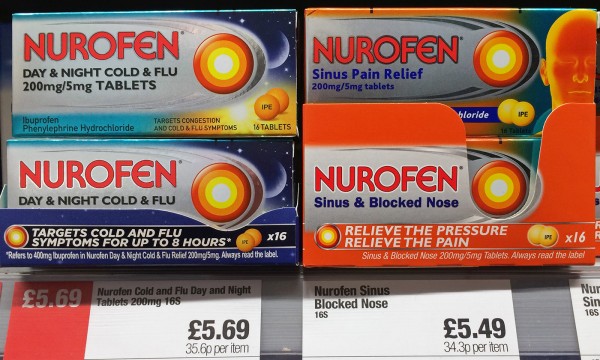 And now the UK Advertising Standards Authority is investigating the company over whether its adverts for Nurofen Express are misleading by stating that the product ‘gives you faster headache relief than standard paracetamol or ibuprofen’. Also it is investigating the company’s claim that its products directly target muscles in the head. Both Nurofen Migraine Pain and Nurofen Tension Headache claim on the front of the box to provide ‘targeted rapid relief’.
And now the UK Advertising Standards Authority is investigating the company over whether its adverts for Nurofen Express are misleading by stating that the product ‘gives you faster headache relief than standard paracetamol or ibuprofen’. Also it is investigating the company’s claim that its products directly target muscles in the head. Both Nurofen Migraine Pain and Nurofen Tension Headache claim on the front of the box to provide ‘targeted rapid relief’.
The company adopts similar practices in its combined pain-killer and decongestant drugs for relieving cold symptoms. For example, its Nurofen Cold and Flu Relief, Nurofen Day and Night Cold and Flu, Nurofen Sinus and Blocked Nose and Nurofen Sinus Pain Relief all contain the same quantities of ibuprofen and the decongestant phenylephrine hydrochloride, but each claims to do something different.
So there are various issues here. The first is whether excessive profits are made by charging a price typically 3 to 4 times greater than the identical generic version of the drug; the second is whether the company deliberately misleads consumers by claiming that a particular version of the drug targets a particular type of pain; the third is whether ‘faster acting’ versions are significantly different; the fourth is whether price discrimination is being practised.
Articles
Nurofen maker Reckitt Benckiser suffers advertising headaches Financial Times, Robert Cookson and Scheherazade Daneshkhu (15/12/15)
Nurofen Express advertising claims probed by UK watchdog BBC News (15/12/15)
ASA probing ‘misleading’ painkiller claims in advert by drug firm behind Nurofen The Telegraph, Tom Morgan and agency (15/12/15)
The great painkiller con: Top drug brands accused of huge mark-ups and misleading claims Mail Online, Sean Poulter and John Naish (16/12/15)
Nurofen Under Investigation By UK Watchdog Over Claims Advert ‘Misled’ Customers Huffington Post, Natasha Hinde (15/12/15)
Australian Competition & Consumer Comission media release
Court finds Nurofen made misleading Specific Pain claims ACCC (14/12/15)
Questions
- Is price discrimination always against the consumer’s interests?
- What form of price discrimination is being practised in the case of Nurofen?
- How, do you think, does Reckitt Benckiser decide the prices it charges retailers for its pain killers and how, do you think, do retailers determine the price they charge consumers for them?
- Is it a reasonable assumption that branded products in most cases are better than own-brand or generic versions? How is behavioural theory relevant here?
- If Reckitt Benckiser were banned from using the word ‘targets’ when referring to one of its product’s effect on particular type of pain, could the company instead use the words ‘suitable for’ relieving a particular type of pain and thereby avoid misleading consumers?
- What is the best way of improving consumer knowledge about particular types of over-the-counter drugs and their effects on the body?
- Comment on the following statement by Dr Aomesh Bhatt, the company’s medical affairs director: ‘The Nurofen specific-pain range was launched with an intention to help consumers navigate their pain relief options, particularly within the grocery environment where there is no healthcare professional to assist decision making.’
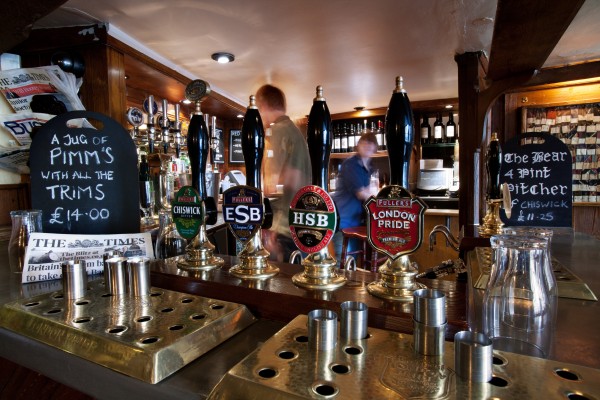 Pubs are closing down in the UK at the rate of 29 per week. The total number has fallen from 67,000 in 1982 to approximately 52,000 this year. In response to this decline the government has recently announced some changes to the way the relationship between pub owners and their tenants are regulated.
Pubs are closing down in the UK at the rate of 29 per week. The total number has fallen from 67,000 in 1982 to approximately 52,000 this year. In response to this decline the government has recently announced some changes to the way the relationship between pub owners and their tenants are regulated.
The ownership of pubs in the UK changed dramatically after a report on the beer market was published by the Monopolies and Mergers Commission (MMC) in 1989. When this investigation took place over 75% of the beer in the UK was produced by the six largest brewing businesses (Bass, Allied Lyons, Grand Metropolitan, Whitbread, Scottish and Newcastle, Courage) which owned over half the pubs. The nature of the relationship between these breweries and the landlords of the pubs they owned caused the greatest concerns.
Some pubs are run as managed houses. In this type of business relationship the person who manages and runs the pub (the publican) is a direct employee of the brewery. However, in many instances this is not the case. Instead they are independent entrepreneurs who enter into a tenancy agreement with the owner of the pub. In other words they rent the pub from the brewery and have some freedom over the way it is run including the setting of prices.
These arrangements have proved to be very controversial because of one particular aspect of many of the tenancy agreements – the exclusive supply contract. Known as the ‘tied lease model’, ‘beer tie’ or ‘wet rent’, it significantly reduces the freedom of publicans to run the business, as they have to purchase almost all their beverages from the brewery that owns the pub.
The MMC report in 1989 concluded that a significant reason for the increasing real price of beer was the market power exerted by the brewers through the tied lease model. It recommended that the number of pubs owned and operated by the brewers should be substantially reduced. Known as the ‘Beer Orders’, the brewers responded by gradually selling off 14,000 pubs. They also eventually sold the breweries to international rivals and companies such as Whitbread and Bass moved into the retail, leisure and hotel sectors. Whitbread currently owns Costa, Brewers Fayre and Premier Inn hotels while Bass, renamed Intercontinental Hotels Groups, owns both Crown Plaza and Holiday Inn hotels.
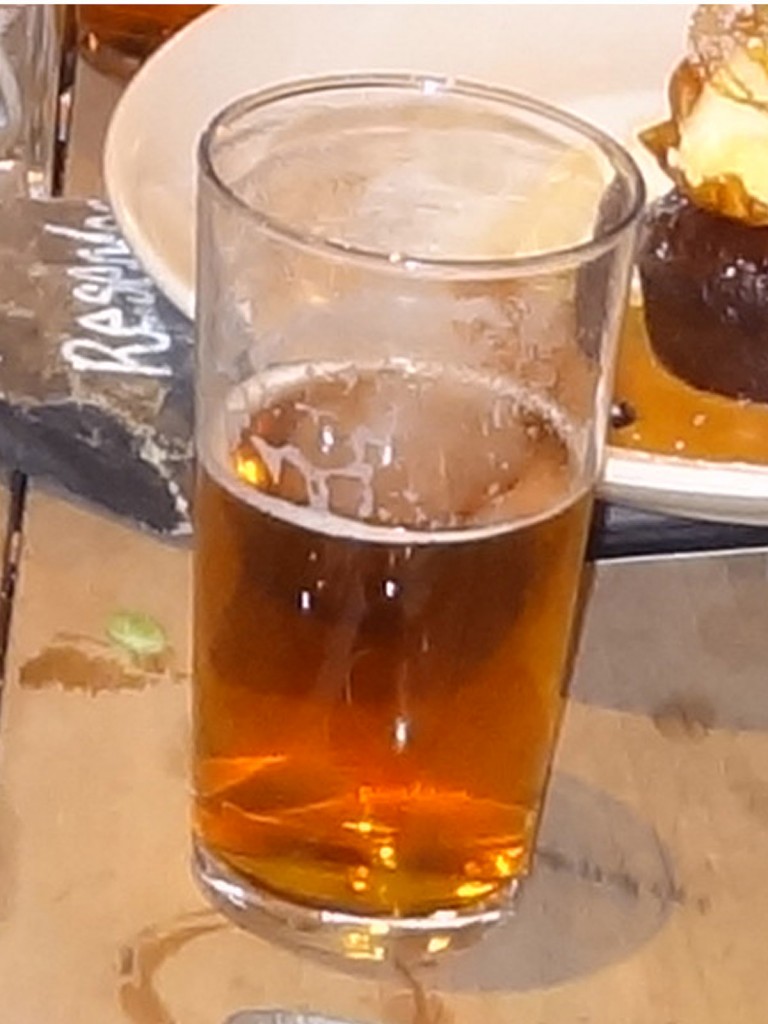 The beer tie between the pubs and the big national breweries might have disappeared but the tied lease arrangement still exists. Instead of being tied to national brewers, many publicans are tied to either smaller regional breweries, such as Everards and Adnams, or another type of business – the pub company known as ‘pubcos’. Some of the larger pubcos include Enterprise Inns, Punch Taverns, Mitchells&Butlers and JD Weatherspoon. They negotiate deals with the breweries and then supply the beer to their pubs.
The beer tie between the pubs and the big national breweries might have disappeared but the tied lease arrangement still exists. Instead of being tied to national brewers, many publicans are tied to either smaller regional breweries, such as Everards and Adnams, or another type of business – the pub company known as ‘pubcos’. Some of the larger pubcos include Enterprise Inns, Punch Taverns, Mitchells&Butlers and JD Weatherspoon. They negotiate deals with the breweries and then supply the beer to their pubs.
In 2014, The British Beer and Pub Association estimated that two-fifths of pubs in the UK were owned by pubcos, while another fifth were owned by regional breweries. In 2013, The Department for Business, Innovation and Skills estimated that 48 per cent of pubs in the UK had landlords who were tied to either a regional brewer or a pub company.
The ownership of pubs may have changed radically over the past 20 years but the tied lease system continues to be extremely controversial. The main argument against the system is that it leads to tied publicans having to pay significantly above free market prices for their beer. The pubcos accept this claim but maintain that, in return for being in a tied lease, the publican pays a lower rent and receives business support services.
Parliament passed the Small Business, Enterprise and Employment Act in March 2015 (see Part 4). This included provisions for the introduction of:
|
|
| • |
a statutory Pubs Code to govern the relationship between the businesses that own the pubs and their tenants; |
| • |
a new independent Adjudicator to enforce the code; |
| • |
a Market Rent Only (MRO) option. |
In October 2015 the government announced some proposals for how the MRO option could be implemented as part of its consultation process with the industry. These include giving the tied publican the right to ask for a rent assessment every five years or whenever the owner of the pub significantly changes the beer prices it charges the tenant. As part of this rent assessment the publican can take the option to switch to an MRO contract. This gives them the freedom to purchase beer from any supplier rather than being tied to those supplied by the owner of the pub.
Enterprise Inns, the largest pubco, operates nearly all of its pubs on the tied lease model. In response to the changes proposed by the Government, the company has announced plans significantly to increase the number of its directly managed pubs from just 16 to 800.
Could the tied lease system finally be about to end?
Articles
Enterprise Inns to grow pub numbers after death of the ‘beer tie’ The Telegraph, Ben Martin, and Peter Spence (12/05/15)
What is the ‘beer tie’ The Telegraph, Denise Roland (19/11/14)
Q&A: Calling time on the beer tie BBC News, Katie Hope (19/11/14)
Chin chin! Fair deal for pub tenants under a new beer tie crackdown City AM, Suzie Neuwirth (29/10/15)
Industry Reacts to New Statutory Pubs Code Eat Out, Nathan Pearce (29/10/15)
What does new pub code mean for the leased pubs? Burton Mail, Andrew Musgrove (04/11/15)
Questions
- What has happened to the big six national brewers which once dominated the beer industry in the UK?
- What factors have caused the decline in the number of pubs?
- Using a diagram, illustrate the impact that the market power of the pubcos might have on the prices paid by publicans in a tied lease.
- Discuss some of the potential advantages of the tied lease model.
- The global brewers and pubcos might create a situation where market power exists in successive stages of the vertical supply chain. Analyse some of the potential implications of this structure and discuss the concept of double marginalisation.
 Global merger and acquisition deals with a combined value of £2.7 trillion ($4.06 trillion) have taken place so far this year (1 Jan to 3 Nov). This is a 38% increase on the same period in 2014 ($2.94 trillion) and even surpasses the previous record high for the same period in 2007 ($3.93 trillion) (see the chart from the Dealogic article linked below).
Global merger and acquisition deals with a combined value of £2.7 trillion ($4.06 trillion) have taken place so far this year (1 Jan to 3 Nov). This is a 38% increase on the same period in 2014 ($2.94 trillion) and even surpasses the previous record high for the same period in 2007 ($3.93 trillion) (see the chart from the Dealogic article linked below).
Measured by dollar value, October was the fifth biggest month in Mergers and Acquisitions (M&As) history with the announcement of $514bn of actual or proposed deals. These included:
|
|
| • |
the proposed £71 billion deal to acquire SABMiller (the world’s second largest brewer) by AB InBev (the world’s largest brewer); |
| • |
the $67bn takeover of network storage provider EMC by Dell (the world’s third largest computer supplier); |
| • |
the proposed deal to acquire Allergan (producer of Botox) by Pfizer (the producer of Viagra). |
Although the dollar value of M&As was extremely large in October the actual number of deals, 2177, was significantly lower than the average of 3521 over the previous 9 months.
Are these large M&As in the interests of the consumer? One advantage is that the newly combined firms may have lower average costs. Reports in the press, following the announcement of most M&As, often discuss the potential for reductions in duplicate resources and rationalisation. After the successful completion of a takeover two previously separate departments, such as finance, law or HRM, may be combined into one office. If the newly integrated department is (i) smaller than the previous two departments added together and (ii) can operate just as effectively, then average costs will fall. This is simply an example of an economy of scale.
Average costs will also decrease if x-inefficiency within the acquired business can be reduced or eliminated. X-inefficiency exists when an organisation incurs higher costs than are necessary to produce any given output. In other words it is not producing in the cheapest possible way. In a number of takeovers in the brewing industry, AB InBev has gained a fearsome reputation for minimising costs and removing any waste or slack in acquired organisations. In an interview with the Financial Times, its chief executive, Carlos Brito, stated that:
“In any company, there’s 20 per cent that lead, 70 per cent that follow and 10 per cent that do nothing. So the 10 per cent, of course, you need to get rid of.”
If any reduction in costs results in lower prices without any lessening in the quality of the good or service, then of course the customer will benefit. However, when two relatively large organisations combine, it may result in a newly merged business with considerable market power. With a fall in the price elasticity of demand for its goods and services, this bigger company may be able to increase its prices and make greater revenues.
An important responsibility of a taxpayer-funded competition authority is to make judgements about whether or not large M&As are in the public interest. For example, the Competition and Markets Authority in the UK investigates deals if the target company has a UK turnover that exceeds £70 million, or if the newly combined business has a market share that is equal to or exceeds 25 per cent. If the CMA concludes that an M&A would lead to a substantial lessening of competition in the market, then it could prohibit the deal from taking place. This has only happened on 9 occasions in the last 12 years. If competition concerns are identified, it is far more likely that CMA will allow the deal to go ahead but with certain conditions attached. This has happened 29 times in the last 12 years and the conditions are referred to as remedies.
The CMA has recently published a report (Understanding past merger remedies) that attempts to evaluate the relative success of the various remedies it has used in 13 M&A cases.
Articles
Are big mergers bad for consumers? BBC News, Daniel Thomas (30/10/15)
Mergers and acquisitions madness may be about to stop The Guardian (11/10/15)
M&A deal activity on pace for record year The Wall Street Journal, Dana Mattioli and Dan Strumpf (10/08/15) [Note: if you can’t see the full article, try clearing cookies (Ctrl+Shift+Delete)]
Global M&A Volume Surpasses $4tr in 2015 YTD Dealogic, Anthony Read (04/11/15)
M&A Volumes Weaken in October despite Megadeals Financial Times, James Fontanella-Khan and Arash Massoudi (01/11/15)
The merger of Dell and EMC is further proof that the IT industry is remaking itself The Economist (12/10/15)
Questions
- Using a cost curve diagram, explain the difference between economies of scale and x-efficiency.
- Explain why a takeover or merger might reduce the price elasticity of demand for the goods or services produced by the newly combined firm.
- Explain how the CMA determines the size of the appropriate market when calculating a firm’s market share.
- Draw a diagram to illustrate the simultaneous impact of greater market power and lower average costs that might result from a horizontal merger. Consider the impact on consumer, producer and total surplus.
- What is the difference between a structural and a behavioural remedy?
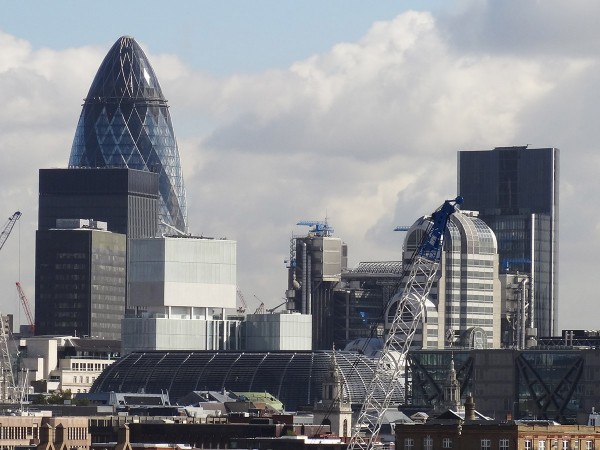 The proposed $100 billion takeover of SABMiller by AB InBev is the third largest in history. It provides a good example of how the UK Panel on Takeovers and Mergers operates.
The proposed $100 billion takeover of SABMiller by AB InBev is the third largest in history. It provides a good example of how the UK Panel on Takeovers and Mergers operates.
Economics textbooks often discuss competition authorities such as the Competition and Markets Authority but they rarely mention the UK Panel on Takeovers and Mergers (The Panel).The Panel is an independent body that was established in 1968. It has up to 35 members who all have professional expertise on the subject of takeovers i.e. they are usually employees of or have been seconded from (i) law and accountancy firms (ii) corporate brokers (iii) investment banks.
The Panel’s main responsibility is to implement the City Code on Takeovers and Mergers. This code sets out a number of ground-rules that companies must follow if they are involved in a merger or takeover. These rules became statutory in 2006 following the Companies Act of that year. The following objectives underpin the code:
|
|
| • |
To ensure that the shareholders of the target company in a proposed takeover are treated fairly and are given the opportunity to make an informed decision about the relative merits of the takeover. |
| • |
To ensure that the whole takeover/merger process operates in a structured and systematic manner. |
The Panel does not make any judgements on the commercial case for the takeover or merger. This is left to the management and shareholders of the companies involved. It also does not get involved with competition issues such as whether the newly established firm would have significant market power. These decisions in the UK are left to the Competition and Markets Authority. If the merger has a European element/dimension to it then it is investigated by the European Commission.
The rules that made up the code remained largely unchanged from 1968 until some important changes were made in September 2011. This followed the controversial takeover of Cadbury by the US food company Kraft. Kraft had first announced its intention to make an offer to acquire Cadbury in September 2009 but a deal was not agreed by the management of Cadbury until January 2010. Concerns were expressed at the time that this long and protracted takeover had made it very difficult for Cadbury to run its business effectively because of the uncertainty it created. It was also argued that the rules gave the acquiring company a significant tactical advantage in the takeover process and made it too easy for them to succeed.
One important change is that a targeted company must publicly announce the name of any companies that have made an approach about a possible deal. This announcement then activates a 28 day bid deadline period known as ‘pusu’ which stands for ‘put up’ (the money: i.e. make a formal bid) or ‘shut up’ (and walk away). This means that if the potential acquirer has not made a formal bid by the end of this 28-day period it is prohibited from making a bid for another 6 months. A request can be made to the Takeover Panel for an extension to this initial 28-day period, but this can only be done with the agreement of the target company.
Therefore SABMiller was obliged to announce on 15th September 2015 that
“Anheuser-Busch InBev SA/NV (AB InBev) has informed SABMiller that it intends to make a proposal to acquire SABMiller. No proposal has yet been received and the Board of SABMiller has no further details about the terms of any such proposal.”
The timing of this announcement made 14th October the official deadline by which AB InBev had to make a formal offer. After rejecting five bids, an offer of £44 a share by AB InBev was agreed in principle by the SABMiller management team on 13th October. 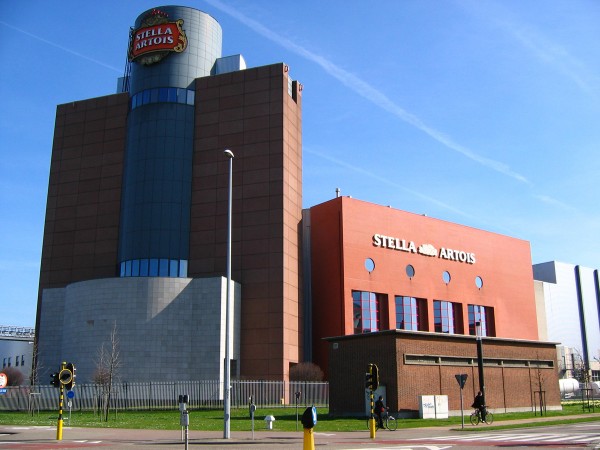 Given the size and complexity of the deal (i.e. AB InBev is financing the deal by borrowing over $70 billion from 21 different banks), an initial two-week extension until 28th October was granted by the Takeover Panel. This could only have been granted with the agreement of SABMiller. Another one-week extension was agreed and then, on 4th November, SABMiller management made the following announcement.
Given the size and complexity of the deal (i.e. AB InBev is financing the deal by borrowing over $70 billion from 21 different banks), an initial two-week extension until 28th October was granted by the Takeover Panel. This could only have been granted with the agreement of SABMiller. Another one-week extension was agreed and then, on 4th November, SABMiller management made the following announcement.
“In order to allow SABMiller and AB InBev to finalise their discussions and satisfy the pre-conditions to the announcement of a formal transaction, the board of SABMiller has requested that the Panel on Takeovers and Mergers further extends the relevant deadline until 5pm November 11, 2015.”
One major issue has been the potential impact of the takeover on the level of competition in the US market. AB InBev and SABMiller already have market shares of 46% and 27% respectively. SABMiller’s strong presence in this market is a result of its joint venture, MillerCoors, with Molson Coors. One reason behind the last request for an extension is to grant enough time for a deal to be finalised for the sale of SABMiller’s 58% stake in MillerCoors to Molson Coors. Without this sale the US competition authorities would not approve the takeover.
Most observers believe that it will take a year for the deal to be completed and it will be interesting to chart its progress over the next 12 months.
Postscript: AB InBev announced on 11th November that it had made a formal offer of £71 billion to acquire SABMiller and SABMiller’s share in MillerCoors had been sold to Molson Coors for $12 billion.
SABMiller to seek another Takeover Panel extension for AB InBev takeover The Telegraph, Ben Martin (04/11/15)
AB InBev and SABMiller allay concerns about 68bn MegaBrew deal The Telegraph, Ben Martin (28/10/15)
AB InBev, SABMiller extend takeover deadline to Nov.4 Reuters, Philip Blenkinsop (28/10/15)
SABMiller agrees AB Inbev takeover deal of £68bn The Guardian, Sean Farrell (13/10/15)
SABMiller is AB Inbev’s toughest takeover yet. It may not be its last The Economist (14/10/15)
Brewery Battle: AB Inbev and the Craft Beer Challenge BBC News, Peter Shadbolt (13/10/15)
Beer Giants AB Inbev and SABMiller Agree Takeover Terms BBC News (13/10/15)
Questions
- The proposed takeover of SABMiller by AB InBev would be the third largest in history. What are the two biggest deals?
- The European Commission investigates ‘large’ mergers that have an ‘EU dimension’. On what basis does the European Commission judge if a merger is large or has an EU dimension?
- On what basis are mergers judged by the Competition and Markets Authority in the UK?
- What is a ‘virtual bid’ period? How did the ‘pusu’ bid deadline operate before the changes were introduced in 2011?
- Pfizer’s bid for Astrazeneca did not succeed in May 2014. Some people blamed the collapse of the deal on the 28-day ‘pusu’ deadline and rule 2.5 (i) of the code. What is rule 2.5 (i) and how did it contribute towards the failure of this deal?
 Recent reports in the media have included headlines such as “Sexist surcharge” and “Pink premium?” Various claims have been made that women pay significantly higher prices for similar products than men.
Recent reports in the media have included headlines such as “Sexist surcharge” and “Pink premium?” Various claims have been made that women pay significantly higher prices for similar products than men. 





